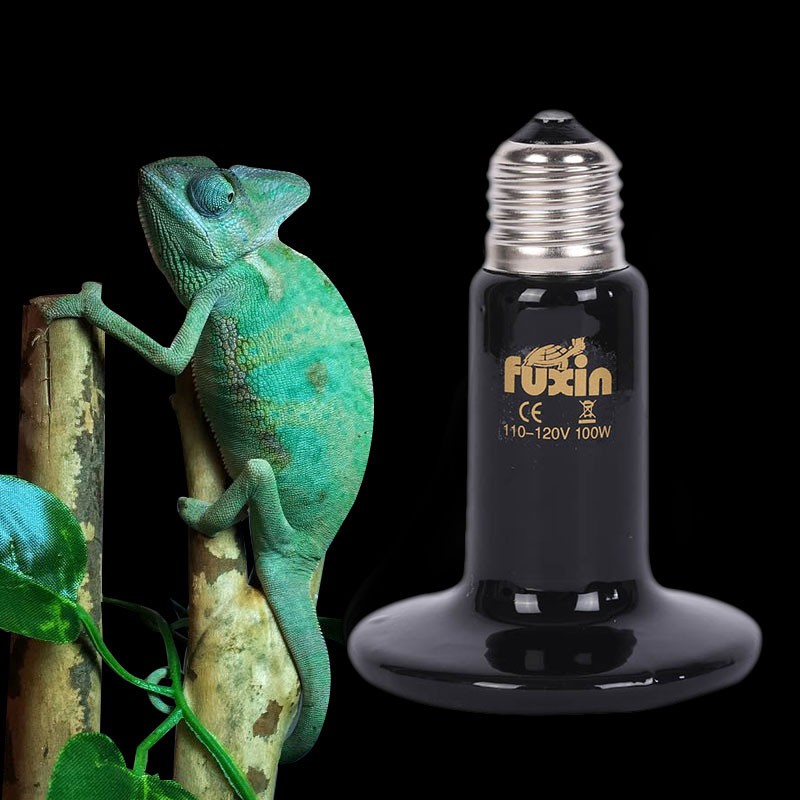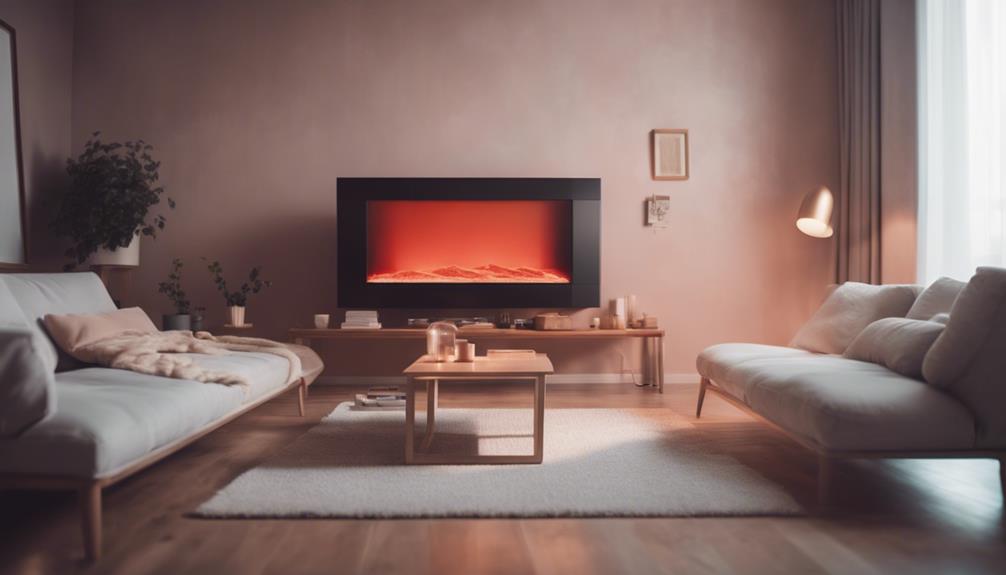
Maximize your energy efficiency with infrared heaters by focusing on direct heat transfer and targeted warmth distribution. Infrared heaters emit infrared radiation to heat objects directly, guaranteeing minimal heat loss and instant comfort. These heaters are energy-efficient, converting nearly all consumed energy into radiant heat, reducing waste and lowering energy bills. By avoiding reliance on circulating air, infrared heaters benefit allergy sufferers and promote better air quality. Consider proper installation and regular maintenance for peak performance. By choosing the right infrared heater for your specific needs, you can guarantee efficient and cost-effective heating solutions that provide comfort and savings.
How Infrared Heaters Work
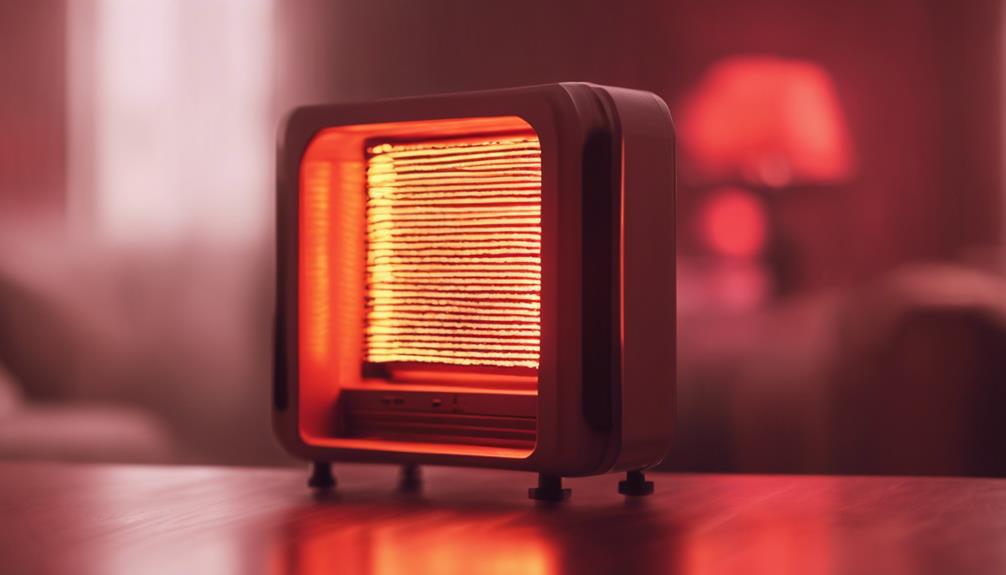
Infrared heaters work by emitting infrared radiation that directly heats objects and people in its path, rather than heating the air around them. This type of heating relies on infrared technology, which is a form of electromagnetic radiation. When the infrared heat waves come into contact with an object, they transfer the heat directly, similar to how the sun warms your skin on a sunny day.
Unlike traditional heaters that warm the air first, infrared heaters provide instant warmth because they heat objects and people directly. This targeted heat transfer is more energy-efficient since there's minimal heat loss to the surrounding environment.
Additionally, infrared heaters don't rely on circulating air, making them a great option for people with allergies or respiratory issues.
Understanding how infrared heaters work can help you maximize energy efficiency in your space by focusing on heating the objects and individuals in the room rather than wasting energy on heating the air.
Benefits of Infrared Heating
Understanding the benefits of infrared heating can help you make informed decisions about maximizing energy efficiency in your space. Infrared heaters offer several advantages beyond just heating your environment.
One significant benefit is the health advantages they provide. Unlike traditional heaters that can circulate allergens and dust particles in the air, infrared heaters operate without drying out the air, helping to maintain better air quality and reducing the likelihood of respiratory issues. Additionally, infrared heating is known to promote better blood circulation and ease muscle pain, providing a more comfortable and healthier indoor environment.
In terms of environmental impact, infrared heaters are a more sustainable heating option compared to traditional systems. They operate efficiently, converting nearly all the energy they consume into radiant heat, which minimizes energy waste. This efficiency not only helps reduce your energy bills but also decreases your carbon footprint by using less energy to achieve the same level of warmth.
Energy Savings Compared to Traditional Heaters
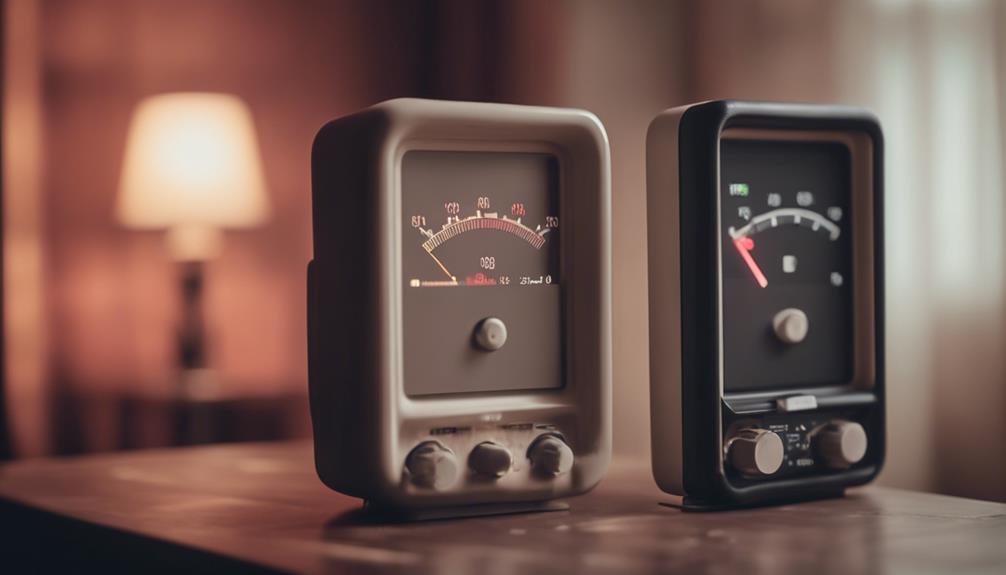
How do infrared heaters compare in energy savings to traditional heating systems?
Infrared heaters are known for their efficiency in converting energy to heat, resulting in potential energy cost savings when compared to traditional heaters. Traditional heating systems often work by heating the air in a room, which can lead to energy loss through drafts or poor insulation.
In contrast, infrared heaters emit infrared radiation that directly heats objects and people in its path, creating a more focused and efficient heating method.
The heating comparison between infrared heaters and traditional systems highlights that infrared heaters can be more cost-effective due to their ability to provide targeted warmth. By heating objects and individuals directly, infrared heaters reduce the amount of energy wasted on heating unused spaces or circulating air.
This focused approach not only increases energy efficiency but also allows for more precise temperature control in different areas of a room.
When considering energy cost savings and heating efficiency, infrared heaters offer a compelling alternative to traditional heating systems.
Zoning and Targeted Heating
Enhance energy efficiency and control heating distribution through zoning and targeted heating methods.
Zoning strategies involve dividing your space into different zones based on usage and occupancy patterns. By using infrared heaters strategically within each zone, you can target applications more effectively.
Zoning allows you to heat only the areas that are in use, rather than wasting energy heating the entire space. For example, you can set up zones for living rooms, bedrooms, or work areas and adjust the heating levels accordingly. This targeted approach guarantees that occupants receive the right amount of heat where and when it's needed most.
To implement zoning effectively, consider the layout of your space and the heating requirements of each area. Install separate controls for each zone to regulate the temperature independently.
Installation Tips for Efficiency
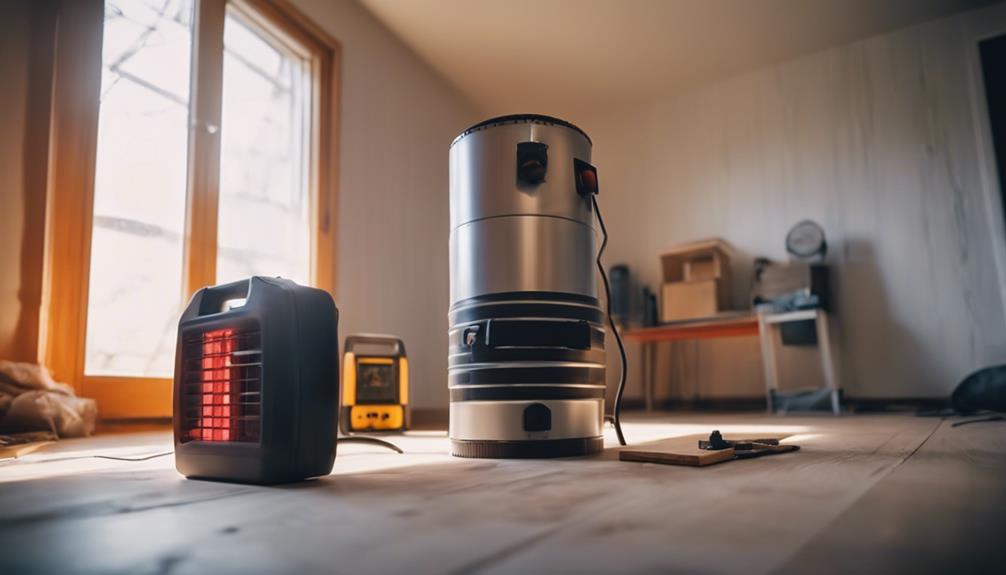
For maximum energy efficiency, guarantee proper installation of your infrared heaters. When setting up your infrared heaters, make certain you have the right installation materials on hand. This includes mounting brackets, screws, and any additional hardware specified by the manufacturer.
Proper heater placement is essential for efficiency. Mount the heaters at the recommended height and angle to guarantee ideal heat distribution. Avoid installing heaters near windows or doors where heat may escape, and aim to place them in areas where the heat can circulate effectively throughout the room.
Additionally, consider the size of the space and the heater's coverage area when determining the number of heaters needed for efficient heating. By carefully following the manufacturer's installation instructions and paying attention to heater placement, you can maximize the energy efficiency of your infrared heaters, ensuring that you get the most out of your heating system while keeping energy costs down.
Maintenance for Optimal Performance
To guarantee peak performance of your infrared heaters, regular maintenance is vital. Cleaning techniques play an important role in guaranteeing peak efficiency.
Start by turning off the heater and allowing it to cool down. Use a soft cloth to wipe down the exterior and remove any dust or debris. For the heating element, gently vacuum or blow out any accumulated dirt to prevent blockages.
Troubleshooting tips can aid in identifying and resolving issues promptly. If you notice uneven heating, check for obstructions blocking the infrared waves and verify the heater is positioned correctly. In case of a malfunctioning thermostat, recalibrate it according to the manufacturer's instructions.
Regularly inspecting the power source and electrical connections can prevent potential hazards. By maintaining your infrared heaters diligently, you not only maximize their energy efficiency but also extend their lifespan, providing consistent warmth and comfort.
Choosing the Right Infrared Heater

To guarantee ideal performance from your infrared heaters, the first step is selecting the right model that suits your specific heating needs and space requirements. There are various heater types to choose from, such as wall-mounted, freestanding, or overhead infrared heaters.
Wall-mounted heaters are ideal for directing heat towards specific areas, while freestanding heaters provide flexibility in placement. Overhead heaters are great for heating larger spaces efficiently.
When it comes to heater sizes, consider the square footage of the area you need to heat. Smaller infrared heaters work well for personal spaces or small rooms, while larger heaters are more suitable for commercial or industrial settings.
It's vital to match the heater size to the space for maximum efficiency. Before making a purchase, make sure to assess the layout of the area, insulation levels, and the intended use of the heater.
Conclusion
Maximizing energy efficiency with infrared heaters is a smart choice for reducing heating costs and staying comfortable in your home.
By understanding how they work, utilizing zoning and targeted heating, and following installation and maintenance tips, you can guarantee peak performance and savings.
Make the switch to infrared heaters to enjoy the benefits of efficient and effective heating in your space.
